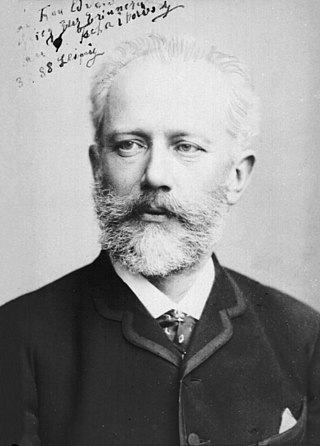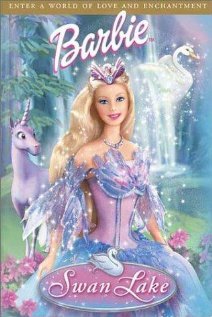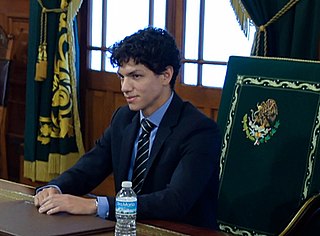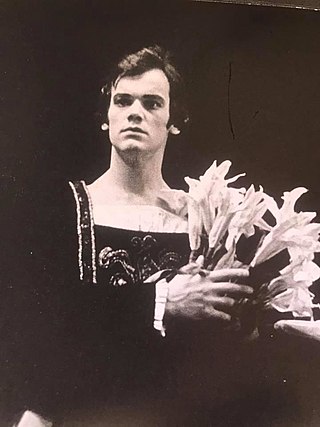Related Research Articles

Swan Lake, Op. 20, is a ballet composed by Russian composer Pyotr Ilyich Tchaikovsky in 1875–76. Despite its initial failure, it is now one of the most popular ballets of all time.

Sir Robert Murray Helpmann was an Australian ballet dancer, actor, director, and choreographer. After early work in Australia he moved to Britain in 1932, where he joined the Vic-Wells Ballet under its creator, Ninette de Valois. He became one of the company's leading men, partnering Alicia Markova and later Margot Fonteyn. When Frederick Ashton, the company's chief choreographer, was called up for military service in the Second World War, Helpmann took over from him while continuing as a principal dancer.

Coppélia is a comic ballet from 1870 originally choreographed by Arthur Saint-Léon to the music of Léo Delibes, with libretto by Charles-Louis-Étienne Nuitter. Nuitter's libretto and mise-en-scène was based upon E. T. A. Hoffmann's short story Der Sandmann. In Greek, κοπέλα means young woman. Coppélia premiered on 25 May 1870 at the Théâtre Impérial de l'Opéra, with the 16-year-old Giuseppina Bozzacchi in the principal role of Swanhilda and ballerina Eugénie Fiocre playing the part of Frantz en travesti. The costumes were designed by Paul Lormier and Alfred Albert, the scenery by Charles-Antoine Cambon, and Édouard Desplechin and Jean-Baptiste Lavastre.
José Manuel Carreño is a retired Cuban ballet dancer, who performed as a principal dancer with the English National Ballet, Royal Ballet and American Ballet Theatre.

"The Sandman" is a short story by E. T. A. Hoffmann. It was the first in an 1817 book of stories titled Die Nachtstücke.

Barbie of Swan Lake is a 2003 animated fantasy film co-produced by Mainframe Entertainment and Mattel Entertainment, and distributed by Artisan Home Entertainment.

Carlos Yunior Acosta Quesada is a Cuban-British ballet director and retired dancer who is director of the Birmingham Royal Ballet. He danced with many companies, including the English National Ballet, National Ballet of Cuba, Houston Ballet and American Ballet Theatre. He was a permanent member of The Royal Ballet from 1998 to 2015. In 2003, he was promoted to principal guest artist, a rank that reduced his commitment, enabling him to concentrate on a growing schedule of international guest appearances and tours. He celebrated his farewell after 17 years at The Royal Ballet, dancing his last performance in November 2015 in Carmen, which he both choreographed and starred in.
Sascha Radetsky is a former ballet dancer and actor. He was a corps dancer and a soloist with the American Ballet Theatre and a principal with Dutch National Ballet. He is known for having starred as Charlie in the motion picture Center Stage and as Ross in the Starz miniseries Flesh and Bone. In 2018 he was named artistic director of American Ballet Theatre's Studio Company.
Mara Galeazzi is an Italian ballet dancer actress and choreographer.She was a Principal Dancer of The Royal Ballet.

David Hallberg is an American classical ballet dancer. He was a principal dancer with American Ballet Theatre and resident guest artist at The Australian Ballet, as well as a principal dancer with the Bolshoi Ballet. In 2021, Hallberg became the artistic director of The Australian Ballet.
Alexander Marshall Grant was a New Zealand ballet dancer, teacher, and company director. After moving to London as a young man, he became known as "the Royal Ballet's most remarkable actor-dancer in its golden period from the 1940s to the 1960s."
Irek Dzhavdatovich Mukhamedov OBE, is a Soviet-born British ballet dancer of Tatar origin who has danced with the Bolshoi Ballet and the Royal Ballet. Born in Kazan, he trained at the Moscow Choreographic Institute under the guidance of Alexander Prokofiev between 1970 and 1978. Upon graduation, he joined the Classical Ballet Company, where he spent three years touring around the world. It was with this company that he first danced Romeo, a role that was to become one of his most acclaimed. In 1981 he won the Grand Prix and gold medal at the International Ballet Competition in Moscow and was immediately invited to join the Bolshoi Ballet as a principal dancer, where he not only became Grigorovich's favourite danseur but went to become the youngest man ever to dance the leading role in Spartacus.

Isaac Eleazar Hernández Fernández is a Mexican ballet dancer, actor, and Guest Artist of American Ballet Theatre. In January 2025, Hernández will become one of ABT's principal dancers, the first dancer of Mexican ancestry to achieve this title in the ballet company's 85-year history.

Michaela Mabinty DePrince was a Sierra Leonean–American ballet dancer who danced with the Boston Ballet, the Dance Theatre of Harlem, and the Dutch National Ballet.

Yosvani Ramos is a Cuban ballet dancer. He danced with the English National Ballet for nine years, five as a principal dancer, before joining The Australian Ballet as a principal artist in January 2008, leaving in 2013 and dancing with Cincinnati Ballet as a principal dancer for one season. He then joined Colorado Ballet in Denver as a principal dancer, and retired in April 2023. He has been named artistic director of Ballet de Monterrey in Mexico from January 2024.

Igone de Jongh is a Dutch ballerina and a former principal dancer with the Dutch National Ballet. She is featured in the music video for Anouk's song Birds, the official Netherlands entry to the Eurovision Song Contest 2013.

Stephen Jefferies is a retired ballet dancer, artistic director and choreographer. He was a senior principal dancer for The Royal Ballet and The National Ballet of Canada.

Alexander Viktorovich Shiryaev was a Russian ballet dancer, ballet master and choreographer, founder of character dance in Russian ballet who served at the Mariinsky Theatre. Shiryaev was also a pioneering animation director who is credited with the invention of stop motion animation.
Anna Ol is a Russian ballet dancer. She is a principal dancer in the Dutch National Ballet.
References
- 1 2 3 4 5 6 "Coppelia". Annecy Festival. Retrieved 6 July 2023.
- 1 2 3 4 5 "Coppelia: the movie". operaballet.nl. 14 July 2022.
- 1 2 3 Broxton, Jonathan (10 December 2021). "Coppelia – Maurizio Malagnini". Movie Music UK.
- 1 2 Felperin, Leslie (2 April 2022). "Coppelia review – cleverly conceived modern update of Delibes' classic ballet". The Guardian.
- 1 2 3 Murray, Lydia (19 October 2021). "Michaela DePrince Talks About Her New "Coppelia" Film". Pointe Magazine.
- ↑ Zahed, Ramin (18 June 2021). "Creating 'Coppelia': Behind the Scenes of the Innovative Hybrid Movie That Debuted at Annecy". Animation Magazine.
- ↑ "Award Winners 2021". Cambridge Film Festival. Retrieved 6 July 2023.